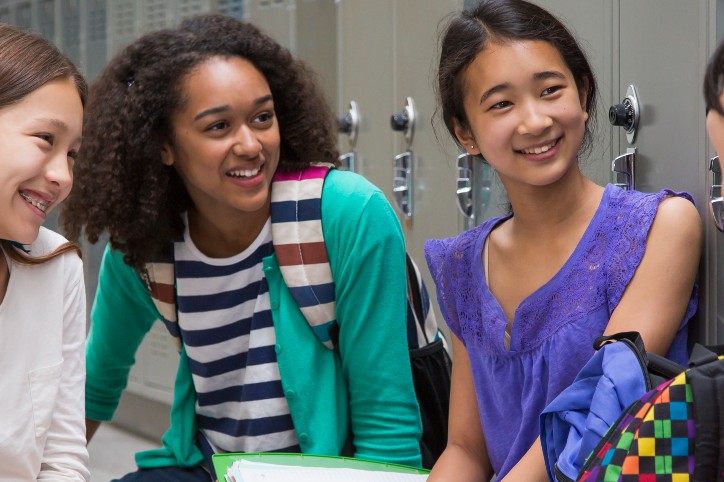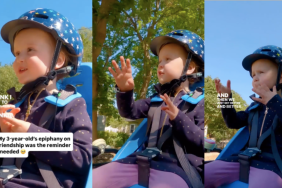Every parent wants a happy and thriving child. It’s not easy to see any child suffer whether that means seeing them being bullied, being “the only kid” not invited to a classmate’s birthday party, or whether it’s a child that suddenly is being ignored by their core group of friends. As parents we always want to swoop in and save the day… but we can’t do that. Instead we can try to help them navigate these inevitable life challenges.
Friendships will naturally start to see changes, especially in middle school. “There are kids that will be more mature and ready for faster social interactions and more grownup experiences and for those who aren’t growing and maturing as quickly as their friends, it may seem as if childhood friends are leaving them behind,” says Darby Fox, LCSW, author of Rethinking Your Teenager. “Typically, developmental growth will coincide with emotional growth, but kids will hit growth at different times and their readiness to experience new or faster things will vary. Another factor for the changes in friendships in middle school is kids start to develop different interests. Sports and other extracurricular activities will often cause new friend groups to form, leaving other friends to feel like outsiders.”

It’s important for parents to remind kids that friend groups may shift as they get older.
Fox underlines that, as we know, these shifts will continue into high school and parents need to help their kids understand that it isn’t personal or because they did something wrong. “For the child it will feel personal and like they are being left out. Parents need to help them understand why it’s happening and help them understand that it’s normal for friendships to change.”
Parents can help kids notice patterns in friendships.
Parents should have kids identify who are their best friends are and encourage them to spend time with those friends according to Fox. “They should also help kids understand who is in the next tier of friendships – these might be people they want to spent more time with but right now are friends they only hang out with once in a while. Finally, parents should help kids identify who is in their outer group of friends and tell their child that they should give these friends space and distance especially if it’s creating negative feelings for your child.”
Fox suggests, to drive the point home, to make a small circle in the center of a piece of paper. Ask your child to put the names of two or three friends that he/she trusts with anything. The ones that will have their back no matter what and vice-a-versa. Then make a slightly bigger circle and have them place the next level of friends there and then one bigger ring ask them to put acquaintances or any one they know and are nice to but don’t really spend time with. Then have the child use arrows to label those that have drifted and those that they’d like to bring closer to the inner circle. “It’s very helpful to have your kids see the dynamics. The circles allow for movement without judgement, which is easier to understand. Discuss why some kids aren’t their friends now or who they want to be closer with as this allows for more agency and activity. Kids are empowered if they can understand it and not feel removed.”








